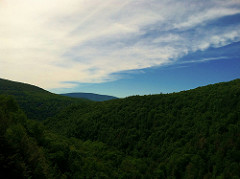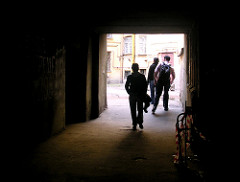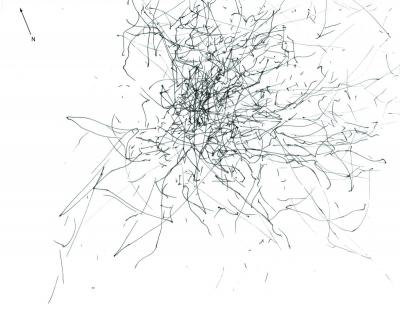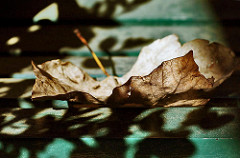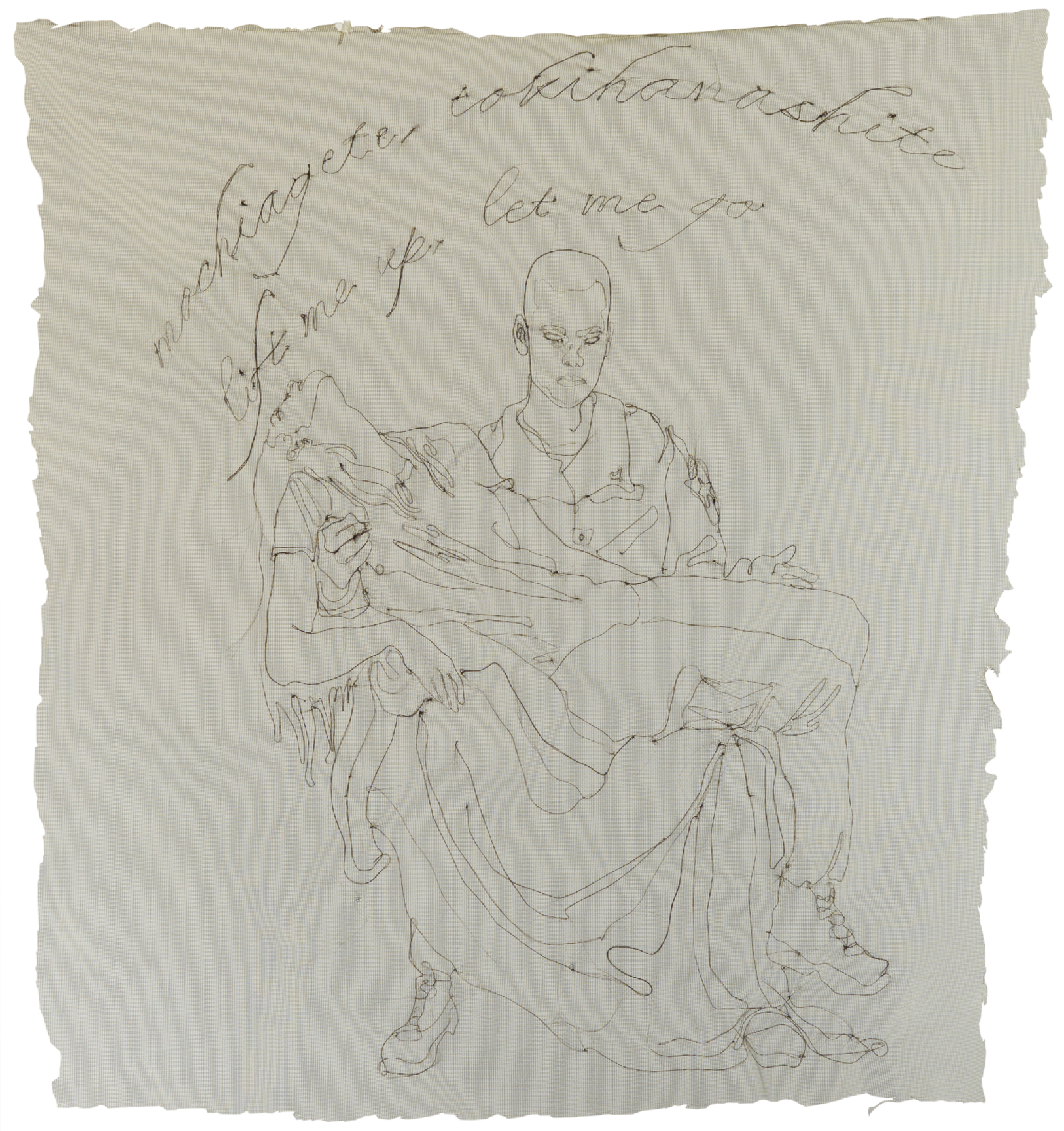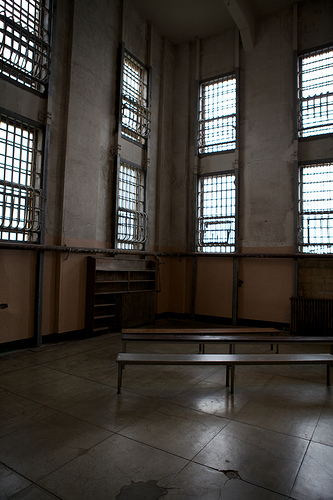All posts tagged: 2012
The Land Up North
We bought it to build a dream on, to propagate. He wanted to plant fruit trees and dig a pond; I imagined a center for healing, where women would come to believe again in possibility. We would build writing sheds, one for each of us, and a ring of rustic cabins for the women. In the mornings, we would come together, then go our separate ways. We’d meet up for dinner, to watch the shadows grow.
Doleo Ergo Sum
By ROBERT EARLE
After Dostoevsky died and interest in The Brothers Karamazov waned, my loquacious Uncle Boris kept the tale going for a few years. After all, he was Dostoevsky’s source in the first place. Then Boris passed away and left me his properties in the boring provincial town of Skotoprigonyevsk, which he loved so much in his conservative, snoopy way, and that is how I became involved in the Karamazov saga. I call it a saga, for that’s what it is: a spiral of stories, including this one, about Katerina Ivanovna Verkhovtsev’s embrace of suffering in her effort to save Ivan Karamazov; about Ivan’s suffering; and, to a certain extent, about my own, because I came to love them both at the expense of a life of my own devices.
A Place in the Sun
They drove east through the desert towns: Hesperia to Victorville to Barstow to Yermo, past the dusty bed of Soda Lake, dry now, a ghostly crater waiting for rain. The route was familiar, a memory stored in his bones. The return trip, Sandy had driven in every condition—exhausted, panicked, blind drunk, sick with shame. But the eastbound journey occurred, always, under controlled conditions. They’d left L.A. at three in the afternoon. You’re crazy, said Myron Gold, whose car he’d borrowed this time. It’s the hottest part of the day. But the timing was no accident; it was part of the protocol: rolling into Vegas at first dark, slipping away (this was the hope) before dawn. Vegas at noon would look stripped and diminished, like a Christmas tree in daylight. It was no place he wanted to see.
Portraits of Land and Sea
There is a long history of artists going out into the natural world to portray its beauty and learn its secrets. Among the most well known are artists like Claude Monet, who painted from his Giverny garden in France, depicting the shifting light and seasonal changes, and naturalists like James Audubon, who created detailed illustrations of American birds that are valued both as works of art and as scientific documents. Today, there is a revived en plein air trend among artists who make novel use of natural elements. Three artists working in this mode are Peter Matthews and the collaborative team formed by Paul Bartow and Richard Metzgar. By utilizing ocean water and the movement of trees, respectively, these artists relinquish control of their compositions to environmental processes, allowing nature to become not only the subject of their work but also the agent of its production.
The Poet in Rome: Richard Wilbur in Postwar Italy
By ROBERT BAGG
I.
Richard Wilbur first visited Rome with the American Fifth
Army that liberated the city, just behind the fleeing Germans, on 5 June 1944.
By 10:00 p.m., his division, the 36th Texans, in trucks, in jeeps, and on mobile artillery, followed the tanks of the First Armored Division into the southern outskirts of Rome, where it paused, expecting to camp and rest within Cinecittà—then, as now, the sprawling center of Italy’s movie industry. Ever the explorer, Wilbur wandered into an abandoned viewing room and found, already loaded into an editing machine, a costume drama set in the Roman Empire. He turned the hand crank and watched a Fascist version of ancient history until his disgust overcame his curiosity. Around midnight, the 36th received an order to cross the city, mount the Gianicolo (Rome’s westernmost hill), and be ready to chase the Germans into Tuscany. But Wilbur’s signal company interpreted the order loosely, slept in, and didn’t cross Rome until the next day, setting up their Message Center inside the Vatican gardens.
Time Shadows
A few months ago, while walking home from the subway in my Brooklyn neighborhood, I noticed a change in the sidewalk — four of the white cement paving stones had been replaced with darker, bluish-gray stones.There had been a lot of construction in the area, and at first I thought they were simply new stones, not yet faded to match the surrounding sidewalk. But when I got closer, I saw they formed an artwork, engraved with the silhouette of a young, leafless sapling. The etching was meant to approximate the shadow of a nearby street tree, although that tree, now in full leaf and several feet taller, was throwing its noticeably longer shadow in the opposite direction.
Tatiana Garmendia
Artist: TATIANA GARMENDIA
Curated by AMY SANDE-FRIEDMAN
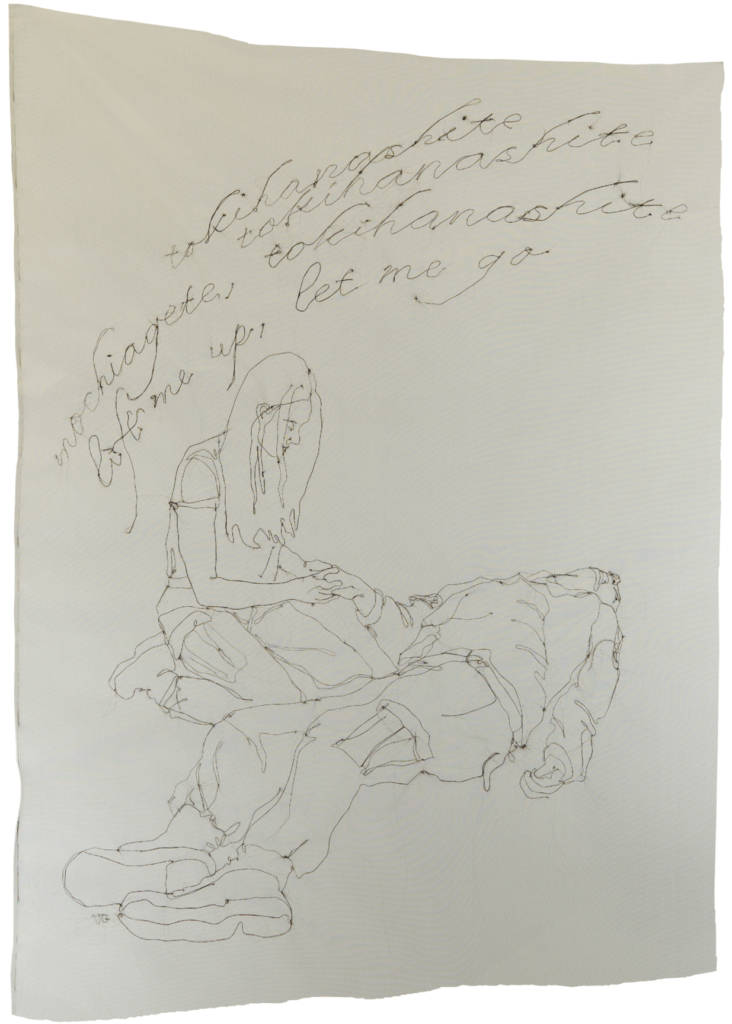 Tatiana Garmendia was inspired to create this series of work, which includes both embroideries stitched into military netting and drawings on paper, by a conversation she had with a veteran who had recently returned from serving in Iraq. Marrying poses from Michelangelo’s The Last Judgment, the altar fresco in the Sistine Chapel at the Vatican, with portraits of soldiers in contemporary military uniforms, she created scenes that refer both to the landscape of present day war and an artistic interpretation of heaven.
Tatiana Garmendia was inspired to create this series of work, which includes both embroideries stitched into military netting and drawings on paper, by a conversation she had with a veteran who had recently returned from serving in Iraq. Marrying poses from Michelangelo’s The Last Judgment, the altar fresco in the Sistine Chapel at the Vatican, with portraits of soldiers in contemporary military uniforms, she created scenes that refer both to the landscape of present day war and an artistic interpretation of heaven.
Poetry in the New Prison
The guard at the gate smiles a toothless smile, and lightly taps the security boom open for me. We recognize each other; him with his brown uniform and heavy automatic tucked into a pocket on the front of his bullet-proof jacket, me with my rusted car and naive wave.
Review: This Is How You Lose Her
Book by JUNOT DIAZ
Reviewed by
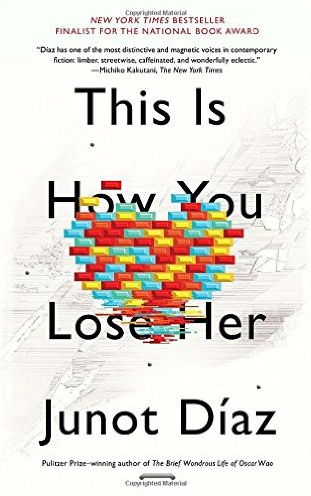 This is How You Lose Her is the title of Junot Diaz’s new short story collection, though it feels most accurate to call it an exposition: this is how you lose her. And this is how you lose her. And her.
This is How You Lose Her is the title of Junot Diaz’s new short story collection, though it feels most accurate to call it an exposition: this is how you lose her. And this is how you lose her. And her.
You get the picture.
As a whole, the book serves as a highly specific, painfully obvious example of how to wind up entering middle age not only single but feeling very alone, the last few decades of your life littered with romances that failed because of you. Because you couldn’t stop cheating.
